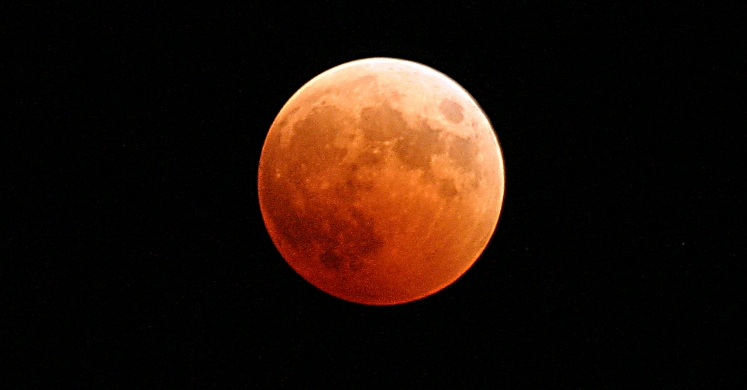Blog

#bioPGH Blog: Supermoon Lunar Eclipse
 A resource of Biophilia: Pittsburgh, #bioPGH is a weekly blog and social media series that aims to encourage both children and adults to reconnect with nature and enjoy what each of our distinctive seasons has to offer. From the best times to plant seasonal flora and enjoy their peak blooms, to astronomical events and creatures to keep an eye and ear out for, Phipps will keep you in the know with what’s going on in our environment!
A resource of Biophilia: Pittsburgh, #bioPGH is a weekly blog and social media series that aims to encourage both children and adults to reconnect with nature and enjoy what each of our distinctive seasons has to offer. From the best times to plant seasonal flora and enjoy their peak blooms, to astronomical events and creatures to keep an eye and ear out for, Phipps will keep you in the know with what’s going on in our environment!
Mark your calendars and head outside this Sunday as the first full moon of fall will be quite the rare sight! Occurring closest to the autumn equinox, or first day of fall, the first full moon of fall was utilized as an indicator by Native American tribes for when to gather staple crops such as pumpkins, corn, beans, squash and rice, thus gaining its title as the "Harvest Moon." It is also one of the most easily recognizable full moons as it is particularly bright in appearance. This year’s Harvest Moon will be particularly impressive, however, as it will also be a totally eclipsed ‘supermoon’! The total lunar eclipse of the "Super" Harvest Moon will begin at around 8 p.m. on Sun., Sept. 27 and will last until approximately 1 a.m., with the greatest eclipse occurring at 10:47 p.m. To add to the uniqueness of this already rare lunar eclipse, the 2015 Harvest Moon will also be the closest supermoon of 2015. If that isn’t enough motivation to get you outdoors Sunday night consider this, there have been just five supermoon total lunar eclipses to occur since Nov. 17, 1910, and the next time you’ll be able to witness a supermoon lunar eclipse like the one this Sunday won’t be until October 8, 2033!
Connecting to the Outdoors Tip: Given the rarity of this particular event it’s the perfect opportunity to grab the family and simply enjoy an evening outdoors observing the sky! With the moon appearing 14% larger in diameter due to its relative position to the Earth it’s the perfect opportunity to observe the moon’s surface with or without a telescope. The Carnegie Science Center will also be inviting guests to observe this astronomical event right on the back lawn of the museum, free of charge, from 8:30 a.m. – 11:30 p.m. on Sun., Sept. 27. Buhl Planetarium staff will also be onsite at the Science Center to guide guests and answer questions about this rare lunar event! You can get kids excited for this Sunday’s lunar event in advance by creating a moon phase puzzle or making some craters in homemade moon sand! Although the total lunar eclipse itself won’t occur until later in the evening and you might be worried about getting little ones in bed, keep in mind that the next supermoon lunar eclipse won’t occur for another 18 years!
Continue the Conversation: Share your nature discoveries with our community by posting to Twitter and Instagram with hashtag #bioPGH, and R.S.V.P. to attend our next Biophilia: Pittsburgh meeting.
Additional Resources:
Supermoon Lunar Eclipse - NASA
Full Moon Phases - Harvest Moon
EarthSky - Super Blood Moon Eclipse
SoPGHReporter - Science Center Will Host a Free Lunar Eclipse Skywatch Event
What Do We Do All Day - Five Moon Activities for Kids
What Do We Do All Day - Moon Lesson: Making Craters Activity
What Do We Do All Day - Moon Phase Activity: DIY Puzzle
Photo © United States Navy
